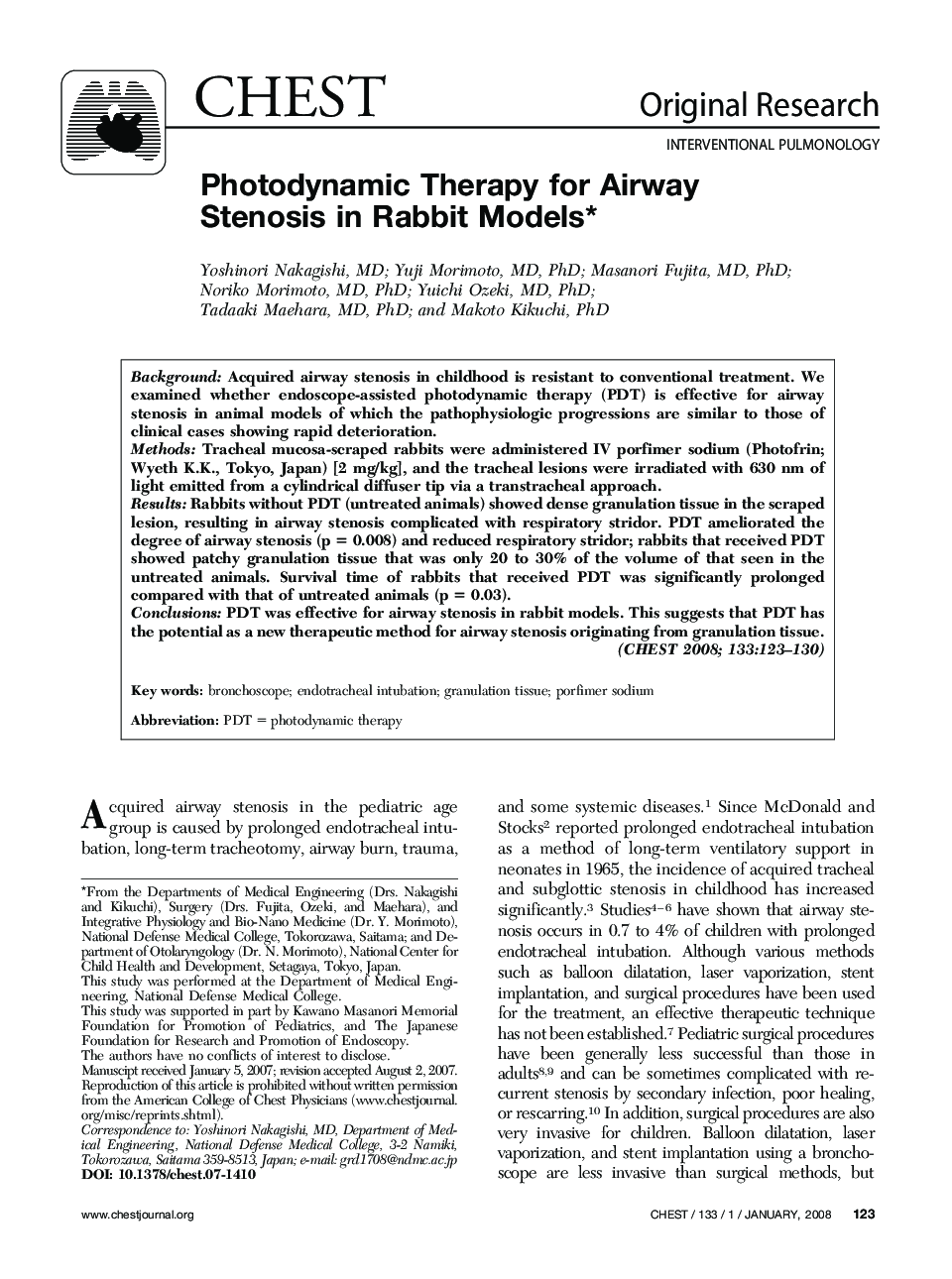| Article ID | Journal | Published Year | Pages | File Type |
|---|---|---|---|---|
| 2904086 | Chest | 2008 | 8 Pages |
BackgroundAcquired airway stenosis in childhood is resistant to conventional treatment. We examined whether endoscope-assisted photodynamic therapy (PDT) is effective for airway stenosis in animal models of which the pathophysiologic progressions are similar to those of clinical cases showing rapid deterioration.MethodsTracheal mucosa-scraped rabbits were administered IV porfimer sodium (Photofrin; Wyeth K.K., Tokyo, Japan) [2 mg/kg], and the tracheal lesions were irradiated with 630 nm of light emitted from a cylindrical diffuser tip via a transtracheal approach.ResultsRabbits without PDT (untreated animals) showed dense granulation tissue in the scraped lesion, resulting in airway stenosis complicated with respiratory stridor. PDT ameliorated the degree of airway stenosis (p = 0.008) and reduced respiratory stridor; rabbits that received PDT showed patchy granulation tissue that was only 20 to 30% of the volume of that seen in the untreated animals. Survival time of rabbits that received PDT was significantly prolonged compared with that of untreated animals (p = 0.03).ConclusionsPDT was effective for airway stenosis in rabbit models. This suggests that PDT has the potential as a new therapeutic method for airway stenosis originating from granulation tissue.
